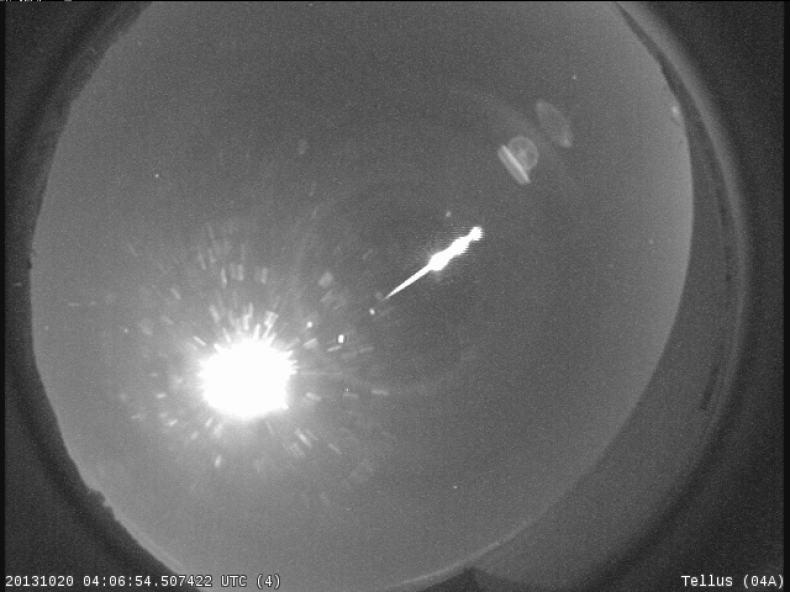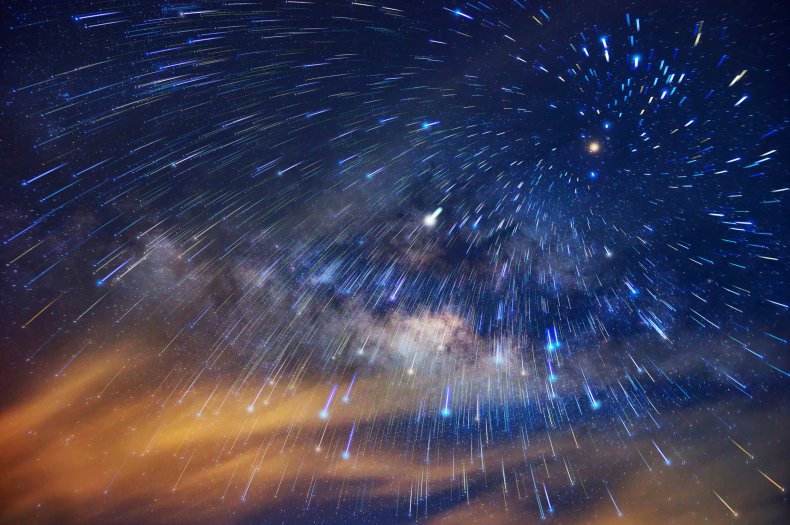The Northern Hemisphere's annual Taurid meteor shower will peak on November 12, just one week before November's full moon, also known as the Beaver Moon, will rise.
The Taurids are not considered as flashy as August's Perseid meteor shower or the Geminid meteor shower, which can be seen in the sky above Earth during December. But this meteor shower, which this year runs from 20 October to 10 December, can still provide some impressive sights—including the occasional fireball.
The Taurids occur between September and November each year during Earth's orbit around the sun when our planet passes through debris left behind by the comet Encke.
Comet Encke, or Comet 2P/Encke as it is officially known, is nearly 3-miles in diameter and orbits the sun once every 3.3 years. While this is over three times the time it takes for Earth to complete an orbit of the sun, Encke actually has the shortest orbital of any known comet.
The dust that the comet sheds will hit Earth's atmosphere at about 65,000 miles per hour, as so-called "fast meteors," burning up and creating the Taurid meteor shower.
Though the shower is usually quite weak, it can produce bright "fireballs" when our planet hits an area of the comet Encke's debris that contains more pebble-sized fragments.

These fireballs are meteors that are as bright, or even brighter, in the night sky than the planet Venus. The fireballs can take the form of larger explosions of light and color and often persist for longer than the average meteor streak.
The Taurids are clearest at times when the constellation of Taurus, from which they take their name, is directly above the horizon during September, October, and November.
The best time to go out and look for this meteor shower is after midnight when Taurus is high in the sky, especially on clear nights.
It's not advisable to search for the Taurids during the Beaver moon on November 19. Because the meteor shower is quite faint, the light of a full moon like November's—which takes its name from the season in which fur hunters would traditionally trap beavers—easily drowns it out. The Taurids are most easily spotted on darker nights with less moonlight.
This year's Beaver Moon, which is also often known as the Frost Moon, will be accompanied by a partial lunar eclipse, visible from North and South America, Australia, and parts of Europe and Asia.
This is the last lunar eclipse of 2021 and while not a total eclipse, 98 percent of the moon will be covered by the shadow of the Earth as our planet, its natural satellite, and the sun from a line with the earth in the middle.
The eclipse, which will give the moon a reddish-brown hue, will peak at 4 am ET on Friday, November 19.

"peak" - Google News
November 03, 2021 at 11:04PM
https://ift.tt/3wdW3ML
Taurid Meteor Shower To Peak Week Before November 2021's Beaver Moon - Newsweek
"peak" - Google News
https://ift.tt/2KZvTqs
https://ift.tt/2Ywz40B
Bagikan Berita Ini
















0 Response to "Taurid Meteor Shower To Peak Week Before November 2021's Beaver Moon - Newsweek"
Post a Comment